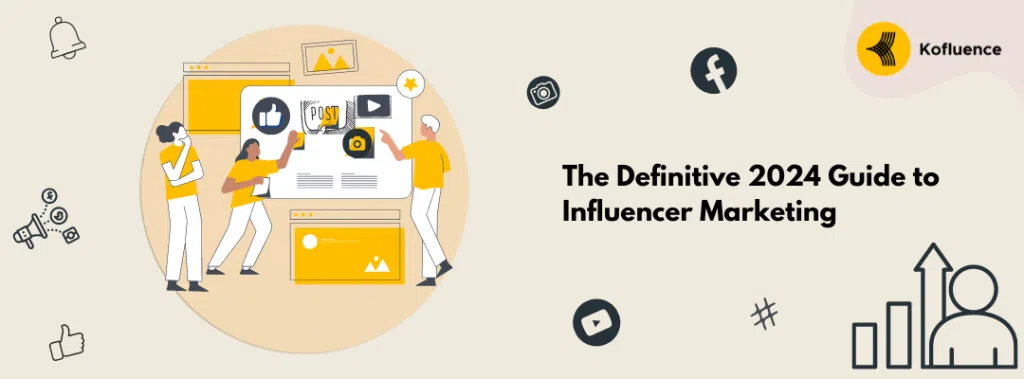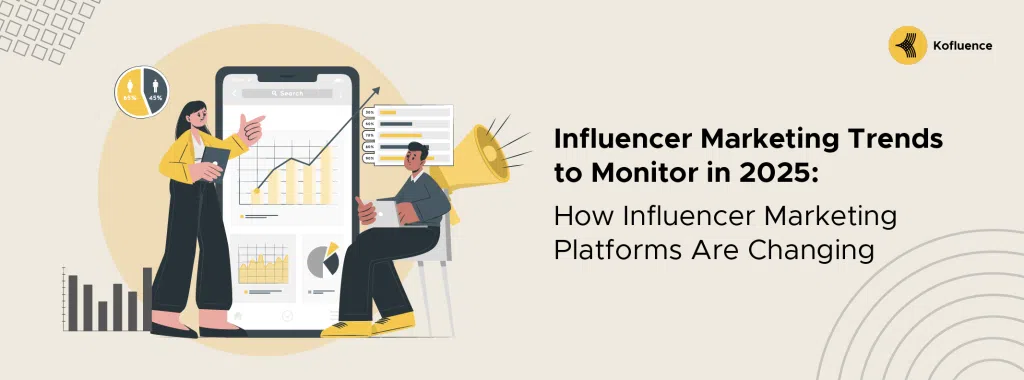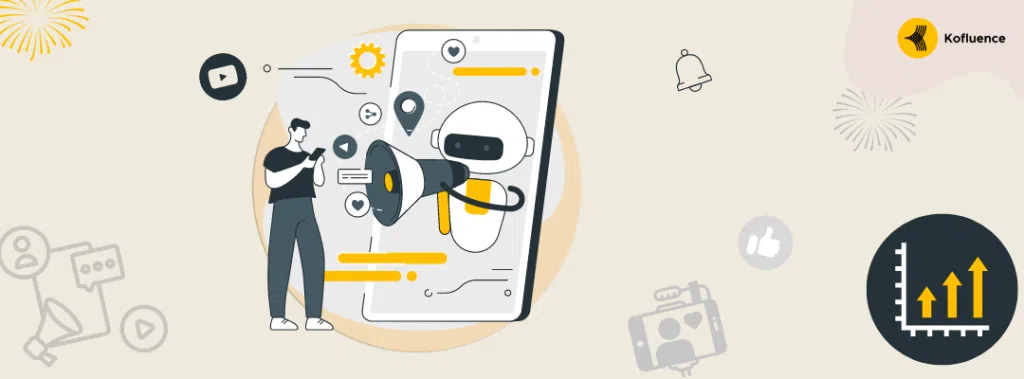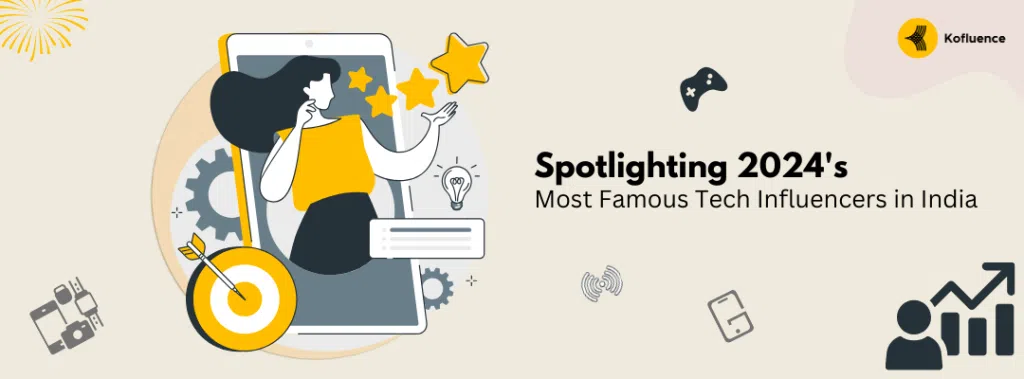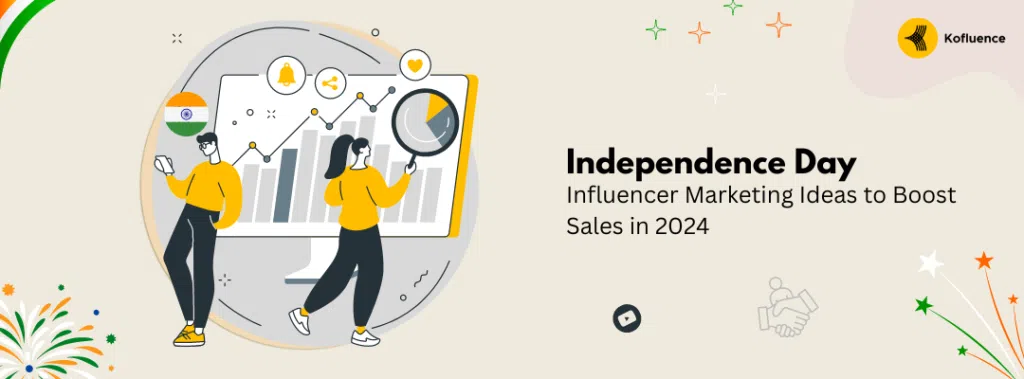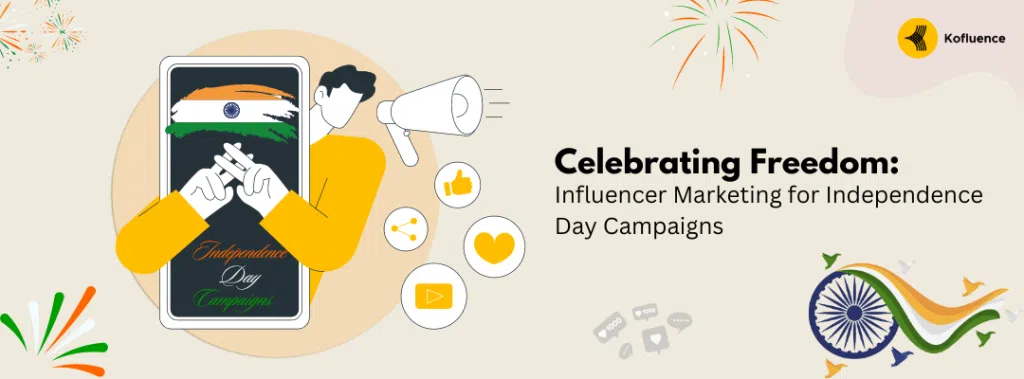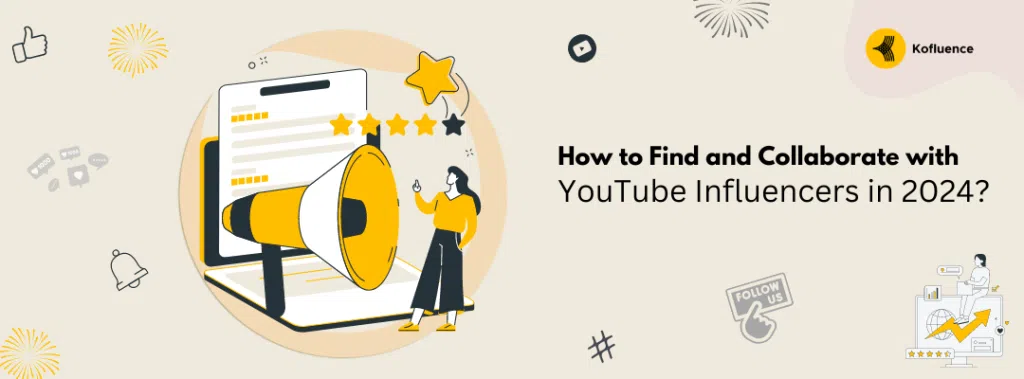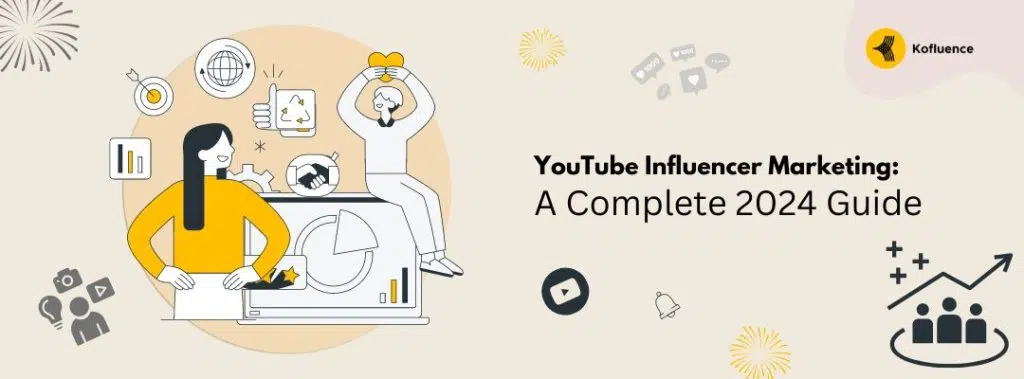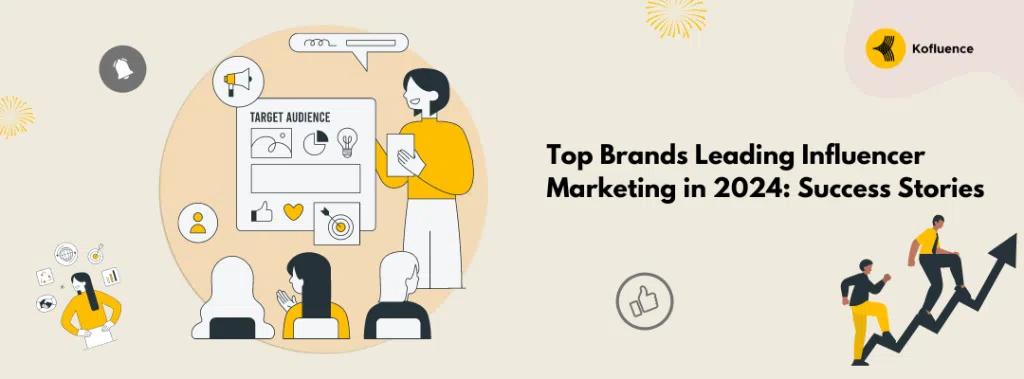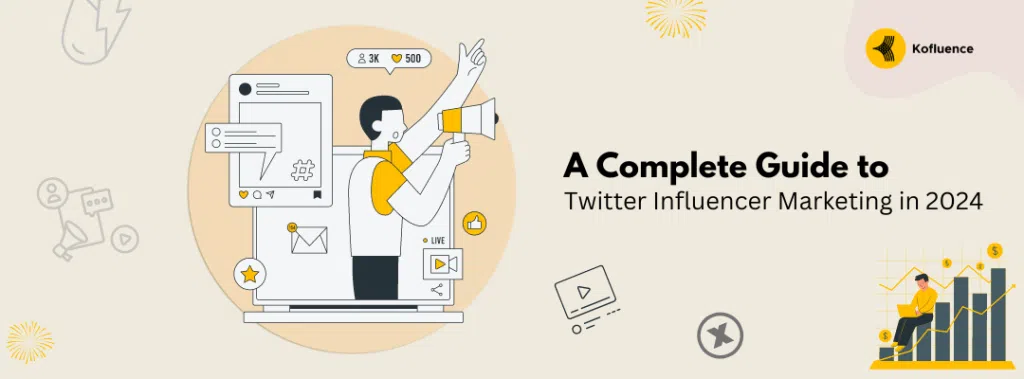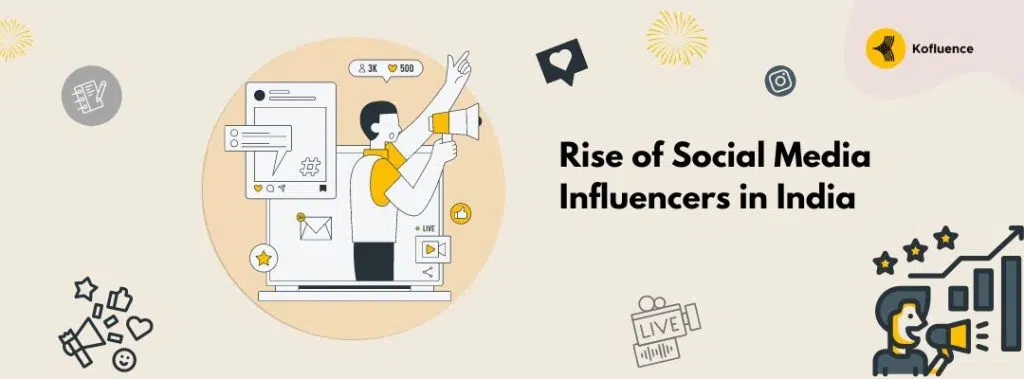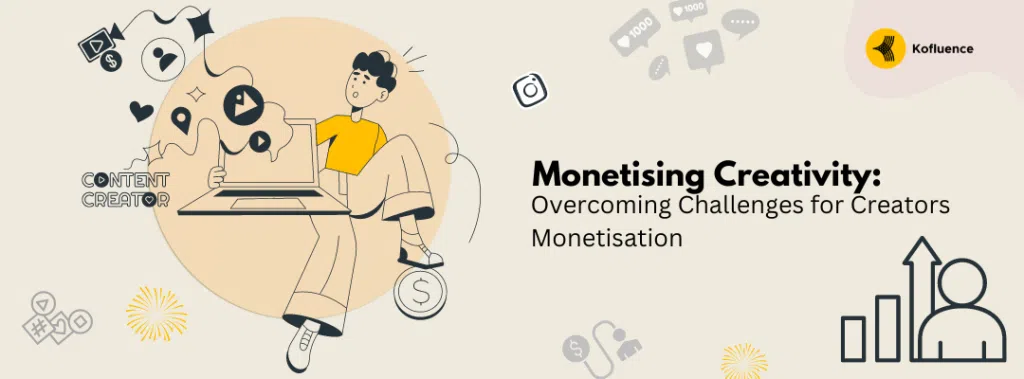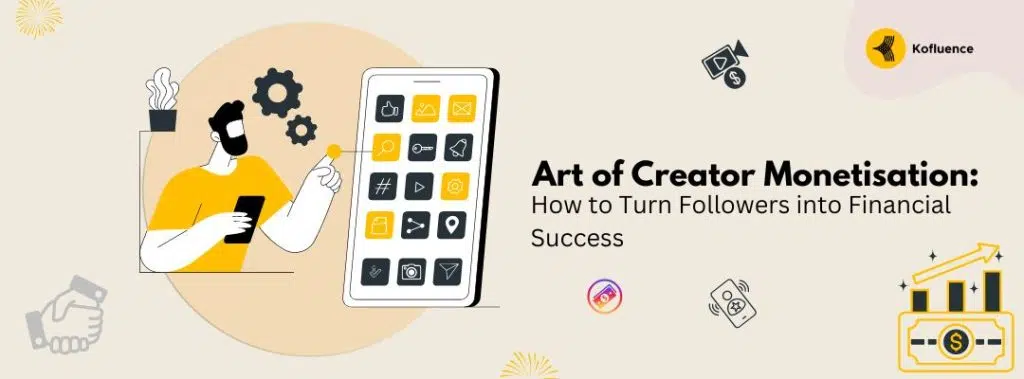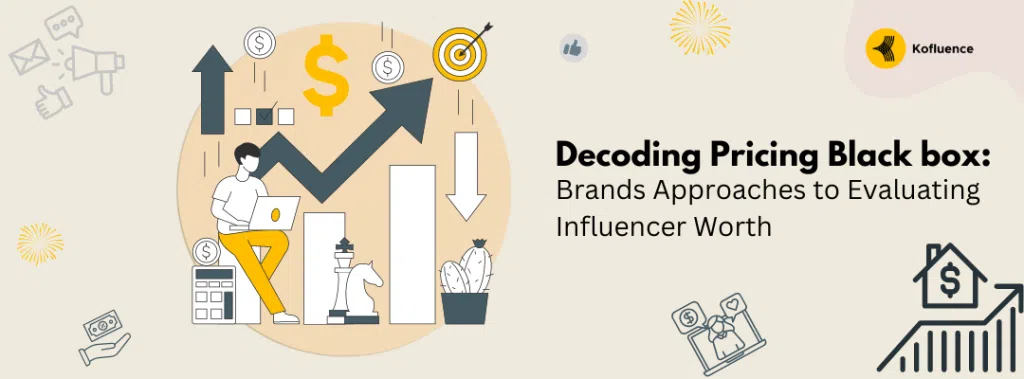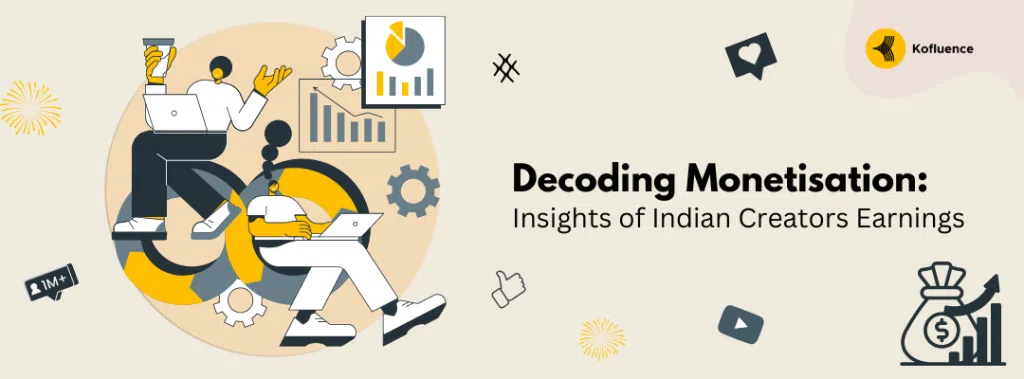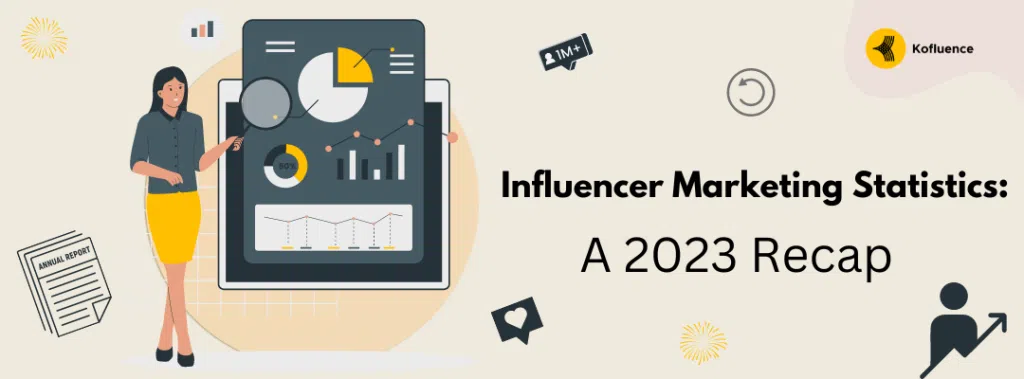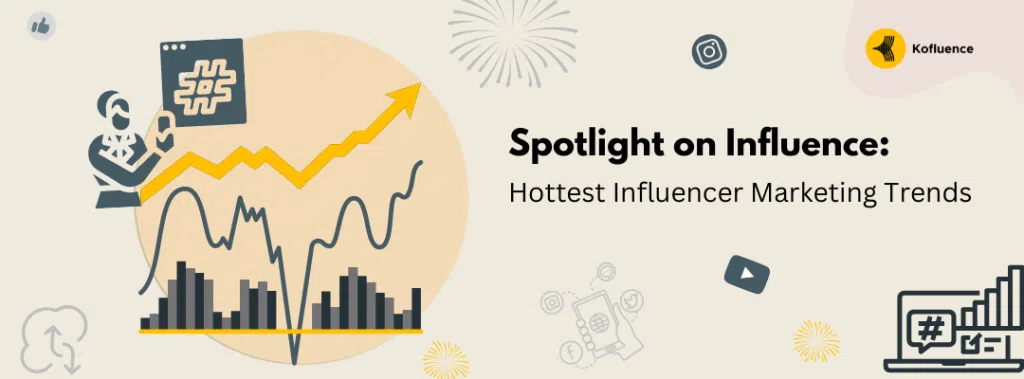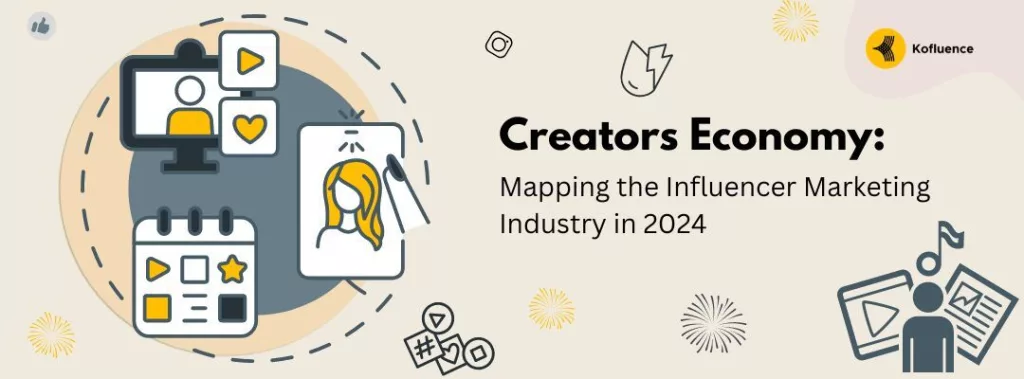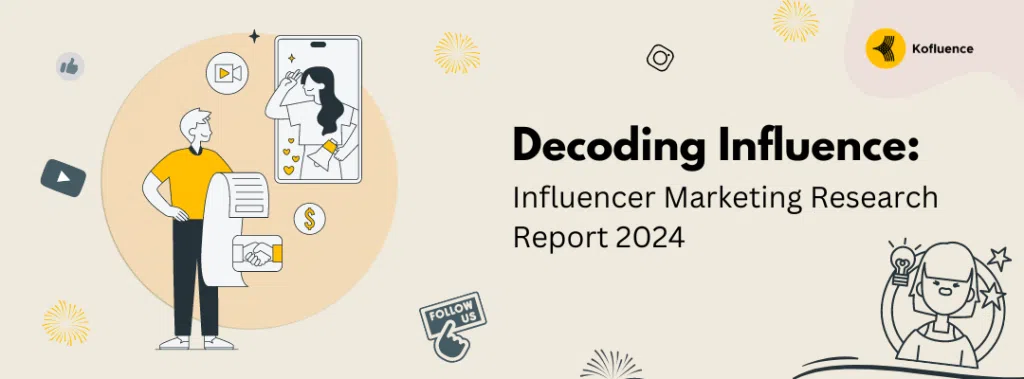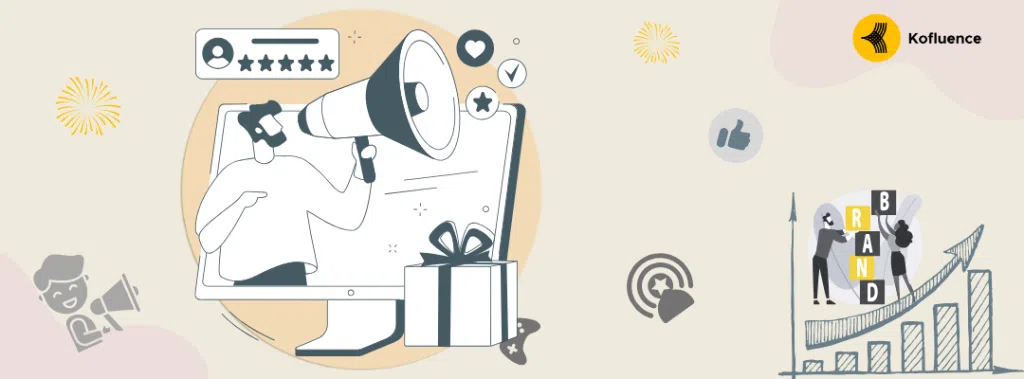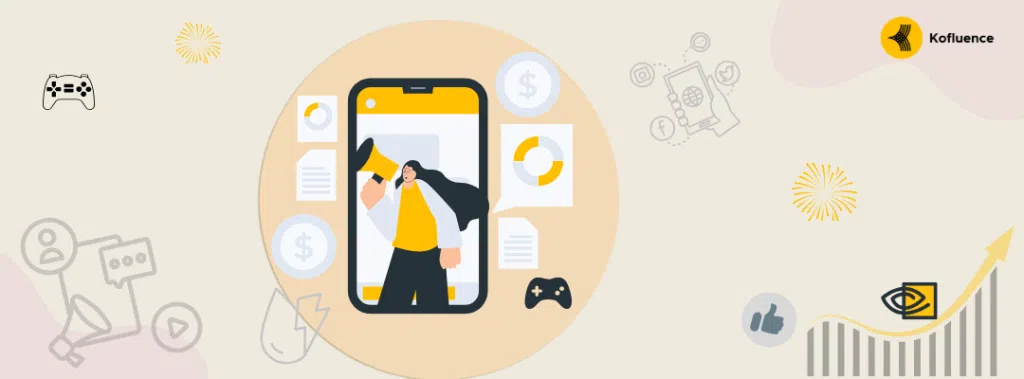Introduction
What is Influencer Marketing?
Types of Influencer Marketing
Top Platforms for Influencer Marketing Success in 2024
Why Use Influencer Marketing in 2024?
How to Use Influencer Marketing Effectively
Key Benefits of Influencer Marketing for Brands
Future Trends in Influencer Marketing
Tips for a Successful Influencer Strategy
Conclusion
FAQ’s
| Did You Know?
According to Kofluence’s 2024 report, more than 170,000 YouTube creators are actively turning their passion into profit through monetisation. This thriving community makes YouTube a powerhouse for influencer marketing. With such a vast number of creators driving engagement and brand partnerships, YouTube continues to be a key player in the digital marketing landscape. |
Introduction
Influencer marketing has rapidly become one of the most effective strategies for businesses and brands to connect with their target audiences. Brands and businesses are adapting to new trends and approaches in marketing with influencers. For brands, influencer marketing provides an unparalleled opportunity to build genuine relationships with consumers. Unlike traditional advertising, influencers connect on a personal level with their audience, helping brands appear more authentic. The ability to reach highly specific niches with engaging, trust-driven content has made influencer marketing indispensable in today’s digital strategy. This guide to influencer marketing will walk you through the essentials of what influencer marketing is, the different types of influencers, and how to use influencer marketing to grow and expand your brand.
What is Influencer Marketing?
Influencer marketing is a marketing technique where businesses collaborate with popular personalities on social media platforms like Instagram, YouTube, and others to promote their products or services. These influencers have large followings that trust their recommendations, which makes them powerful advocates for brands.
At its core, influencer marketing uses the trust that influencers have with their followers to influence their purchasing decisions. Brands benefit from this trust by having influencers promote their product in a way that feels organic and relatable. With influencers varying in size—from nano-influencers to mega-influencers—this strategy offers a scalable approach, allowing brands of all sizes to engage their target audience meaningfully across various platforms.
Types of Influencer Marketing
In 2024, influencer marketing offers diverse strategies to engage with audiences across various platforms. Understanding these types can help brands tailor their approach for maximum impact.
1️⃣ Sponsored Content: One of the most common forms of influencer marketing, sponsored content involves influencers creating posts or videos featuring a brand’s product or service. This approach provides a direct way to promote a brand while leveraging the influencer’s established audience. When done authentically, it’s highly effective for driving awareness and sales.
2️⃣ Product Reviews: Digital influencers often review products or services on their channels, offering honest opinions to their followers. These reviews can build credibility and trust, as audiences value genuine feedback from someone they follow. Detailed reviews and unboxings are particularly impactful in shaping consumer decisions.
3️⃣ Giveaways and Contests: Collaborating with influencers to host giveaways or contests can rapidly increase engagement and brand visibility. This type of influencer marketing encourages participants to interact with the brand by following, liking, or sharing content, expanding reach and attracting potential customers.
4️⃣ Affiliate Marketing: Affiliate marketing involves influencers promoting a brand’s products with a unique link or code. They earn a commission for every sale generated through their referral. This method aligns the influencer’s success with the brand’s, fostering a motivated partnership and measurable results.
5️⃣ Takeovers: Influencer takeovers involve an influencer temporarily managing a brand’s social media account. This approach offers a fresh perspective and engages the influencer’s audience directly with the brand, providing new content and boosting follower interaction.
These types of influencer marketing strategies can be effectively used to connect with different audience segments and enhance brand presence.
Top Platforms for Influencer Marketing Success in 2024
In 2024, influencer marketing is more diverse than ever, with multiple platforms that brands can use to connect with their audience. Let’s explore the key channels that are driving influencer marketing success:
Instagram is one of the biggest and most popular platforms for influencer marketing. Its visual nature is perfect for sharing photos, videos, and stories, making it ideal for lifestyle, fashion, and beauty influencers. Kofluence’s 2024 report shows that 47% of leading Indian brands use Instagram for their influencer marketing, highlighting its significant impact and reach.
YouTube
YouTube excels in long-form content and video marketing. Influencers on YouTube create detailed product reviews, tutorials, and vlogs, resulting in high engagement and a dedicated audience. With over 170,000 content creators monetising their work, YouTube is a major player in influencer marketing, offering brands substantial visibility and interaction opportunities.
Twitter, though less visual, remains crucial for influencer marketing, especially for real-time updates and product launches. Influencers use Twitter to share insights and spark discussions around brands, boosting visibility and engagement. Its unique format helps brands connect with audiences instantly, making it an essential channel for timely and interactive marketing.
Even after the rise of other platforms, Facebook continues to be valuable for influencer marketing. Its broad audience and diverse content options, including live videos, stories, and posts, enable brands to engage effectively. Facebook’s extensive reach helps brands connect with various demographics, maintaining its importance in a comprehensive influencer marketing strategy.
Why Use Influencer Marketing in 2024?
Marketing with influencers continues to grow because it’s proven to be effective in boosting brand visibility and customer trust. Here are some reasons why 2024 influencer marketing should be part of your strategy:
1.Credibility and Trust: Influencers have built strong relationships with their followers, making them a trusted source of recommendations.
2. Targeted Reach: With influencer marketing, brands can select influencers whose followers closely match their target audience. This leads to more relevant and successful campaigns.
3.Cost-Effective Strategy: Compared to traditional forms of advertising, influencer marketing can be more budget-friendly, especially when collaborating with nano and micro influencers.
4.Higher Engagement: Content shared by influencers often sparks more interactions, such as likes, shares, and comments. Their audiences are more likely to engage with posts that feel personal and authentic.
| Key Takeaway:
E-Commerce brands contribute to 27% of all influencer marketing spending, highlighting their significant investment in this strategy. With consumers increasingly turning to online shopping, retail companies are leveraging social influencers to drive product visibility, boost engagement, and convert followers into loyal customers through targeted campaigns. |
How to Use Influencer Marketing Effectively
Successful influencer marketing campaigns require careful planning and execution. Here’s a step-by-step guide to influencer marketing that brands can follow:
👉 Define Your Goals
Before you start working with influencers, it’s important to define what you want to achieve. Are you aiming to increase brand awareness, generate sales, or build a strong online presence?
👉 Choose the Right Influencer
Select influencers whose content and audience align with your brand values. Research their engagement levels and past partnerships to make sure they are a good fit.
👉 Create Engaging Content
Work with your influencer to develop content that will resonate with their audience while promoting your product naturally. Allow the influencer creative freedom to maintain authenticity.
👉 Track Your Results
Use tools to measure the success of your influencer campaigns. Track metrics such as reach, engagement, and conversion rates to evaluate how well your campaign is performing.
Key Benefits of Influencer Marketing for Brands
Influencer marketing offers several benefits for brands looking to grow their audience and improve engagement. Here are the top reasons why **influencer marketing for brands** is so valuable in 2024:
❇️ Enhanced Engagement: Videos and posts shared by influencers typically get more likes, shares, and comments than traditional advertising methods.
❇️ Cost-Effective: Collaborating with nano and micro influencers can be more affordable compared to large-scale traditional advertising campaigns, yet still deliver excellent results.
❇️ Improved SEO: YouTube and Instagram videos featuring your brand can drive more traffic to your website, which improves your search engine rankings.
Future Trends in Influencer Marketing
As the world of influencer marketing evolves, staying on top of trends is crucial for brands.
✴️ Short-Form Content
Platforms like Instagram Reels and YouTube Shorts are driving the trend of short-form content. Influencers are crafting brief, captivating videos that quickly grab attention and maintain audience interest. This format is proving highly effective for engaging viewers and boosting brand visibility.
✴️ Niche Influencers
Brands are increasingly partnering with niche influencers who have specialized, dedicated followings. These influencers deliver higher engagement rates and more personalized marketing experiences. Their targeted reach enables brands to connect deeply with specific audiences, enhancing the effectiveness of their campaigns.
✴️ Live Streaming
Live streaming offers a real-time connection between influencers and their audience, fostering direct interaction and authenticity. This trend is expected to grow in 2024 as influencers use live sessions for product launches, Q&A sessions, and behind-the-scenes content to engage viewers more effectively.
| Key Highlight:
Micro-influencers are emerging as key players in the influencer market. They represent 30% of creators earning income from content creation. Their niche focus and high engagement rates make them valuable for brands seeking targeted, authentic connections with specific audiences, driving effective and impactful marketing campaigns. |
Tips for a Successful Influencer Strategy
Here are some practical tips for brands looking to succeed with influencer marketing in 2024:
- Set Clear Objectives: Know exactly what you want to achieve from your influencer campaigns, whether it’s increased sales, traffic, or engagement.
- Research Influencers Thoroughly: Make sure your chosen influencer is relevant to your brand and has an authentic relationship with their audience.
- Track and Measure Success: Use analytics tools to measure the performance of your campaigns and make data-driven adjustments.
Conclusion
Influencer marketing remains a crucial strategy for brands in 2024. By partnering with the right influencers and creating engaging authentic content, brands can build trust, increase visibility, and drive meaningful engagement. At Kofluence, we excel in crafting impactful influencer campaigns that meet diverse needs. Our expertise ensures that marketing strategies effectively connect with audiences and achieve outstanding results.
If you found this blog to be helpful browse through our website for other blogs on similar topics or get in touch with us for your next influencer marketing campaign! Download the Kofluence app and find relevant campaigns catering to your target audience! To opt-in, download the Kofluence app here: iOS users, and Android users.
FAQ’s
. What is Influencer Marketing?
Influencer Marketing involves collaborating with influencers to promote your brand or products to their audience.
. How to use Influencer Marketing?
Start by setting clear goals, choosing the right influencers, creating authentic content, and tracking your campaign’s success.
. What are the types of Influencer Marketing?
Influencer marketing includes collaborations with mega, macro, micro, and nano influencers depending on their follower count and engagement rates.

